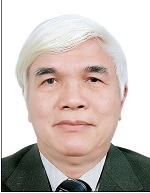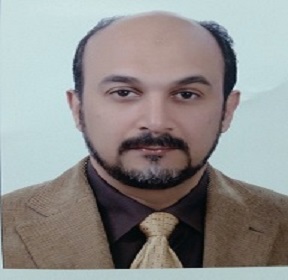Keynote Forum
Mina Hoorfar
CanadaTitle: Graphene?coated spandex sensors for composites health monitoring
Abstract:
Internet of Things has been recently evolved by the state-of-the-art piezoresistive nanocomposite strain sensors due to their high sensitivity and flexibility. Such versatile sensors involve a nanoscale percolating conductive network elaborated into a non-conductive, flexible polymeric matrix. Electrically-conductive polymeric composites have attracted increasing attention owing to their prominent capabilities in applications such as structural health monitoring, human motion detection, and traffic monitoring [1]. The study presented here aims at the development of low-cost, sensitive, and stretchable yarn sensors based on spandex (SpX) yarns coated with graphene nanoplatelets (GnP) through a dip coating process: SpX yarns were cut into 50-mm pieces, and coated with graphene nanoplatelets through a multi-step dip coating process. In each step, the yarns were dipped into a 1 wt.% solution of graphene in deionized (DI) water agitated for 3 sec. This was followed by the dehydration process performed by leaving the yarn on a hotplate at 100 °C for 1 min before the next dipping cycle. After the coating cycles were accomplished, the conductive yarns were attached to carbon fiber tow electrodes from their two ends using silver epoxy at 25 mm distance (i.e. the sensor’s gauge length).
Wash durability and GnP protection was attained by embedding the SpX/GnP sensors into a stretchable silicone rubber (SR) sheath through spin coating. For this purpose, the GnP-coated SpX yarn along with the carbon fiber electrodes was attached to the back side of a 100 mm diameter petri dish. 3 ml of the rubber base polymer was poured onto the petri dish, covering the sensor through spin coating at 200 rpm for 20 sec. The silicone layer was then cured at room temperature for 24 h (resulting in ~1 mm thick silicone sheath encompassing the conductive yarn). The sensor was cut into 3-mm pieces and then detached from the petri-dish surface.
The relative resistance changes of the SpX/GnP/SR sensors were measured 24 hours after removing them from the boiling water tank to imitate the harsh environment during the washing process. The sensors were immersed in the tank for the duration of 2.5 hours to assess wash durability. The effect of the SR thickness (obtained using different spin coating speeds) on the relative resistance change is shown for SpX coated through 20 immersion times (ImTs). A significant permanent resistance change of 54.2% was measured for the sample with no SR sheath. This value was significantly reduced when the SR sheath was applied; the larger the thickness of the sheath the lower the resistance changes (as low as 1.7% at the 200 rpm spin coating speed). This also confirms that the yarns were fully embedded into SR at this thickness, and the SR efficiently protects the GnP layer coated on the SpX yarn. The SpX/GnP sensors embedded into the woven fabrics showed a great potential in monitoring composites manufacturing by providing information of the excessive deformations due to the processing defects, melting, and solidification of the polymer resin. The embedded sensors showed negligible sensitivity to the changes in temperature/humidity.
Biography:
Mina Hoorfar received She received her PhD and MASc degrees in Mechanical Engineering from University of Toronto in 2005 and 2001, respectively, and her BSc from University of Tehran, Iran, in 1998. She is currently Director of the School of Engineering, The University of British Columbia, Canada. She held an NSERC Post-Doctoral Fellowship at Case Western Research University, where she was with one of the earliest centers of fuel cell research. Her current research focuses on the development of portable devices for biomedical applications ranging from DNA purification from saliva, acetone detection from the exhale breath of a diabetes patient, circulating tumor cells detection from the blood of a metastatic patient, and cell patterning on the digital microfluidic platforms for tissue engineering. Another aspect of Dr. Hoorfar’s research endeavors involves the design and fabrication of biosensors and nano-biosensors to achieve low detection limits required for environmental and agricultural applications.
Osman Adiguzel
TurkeyTitle: Nanoscale characterization of phase transformation in shape memory alloys
Abstract:
Shape memory effect is a peculiar property exhibited a series alloy systems in the β-phase fields. Shape memory alloys are sensitive to external condition and temperature, and crystal structure of these alloys change with changing temperature and stressing, by means of structural phase transformation, called martensitic transformations. Shape memory effect is treated thermally by means of thermal induced martensitic transformation, which occurs as martensite variants with lattice twinning in crystallographic or atomic scale, sub-nano scale, in materials on cooling below martensite finish temperature. Twinned martensite structures turn into detwinned martensite structure by means of stress induced martensitic transformation by stressing material in a strain limit in martensitic condition. Shape memory alloys are in the fully martensitic state below martensite finish temperature with fully twinned structure can be easily deformed through variant reorientation/detwinning process. Therefore, martensite is called soft phase and austenite is also called hard phase. Thermal induced martensitic transformation is lattice-distorting phase transformation and occurs as martensite variants with the cooperative movement of atoms by means of shear-like mechanism. Martensitic transformations occur by two or more lattice invariant shears on {110}-type planes of austenite matrix which is basal plane or stacking plane for martensite. In the martensitic transformation, the lattice of high temperature austenite phase has greater crystallographic symmetry than that of the low-temperature product phase. Copper based alloys exhibit this property in metastable β-phase region, which has bcc-based structures at high temperature parent phase field. Lattice invariant shears are not uniform in copper based shape memory alloys, and the ordered parent phase structures martensitically undergo the non-conventional complex layered structures on cooling. The long-period layered structures can be described by different unit cells as 3R, 9R or 18R depending on the stacking sequences on the close-packed planes of the ordered lattice. The close-packed planes, basal planes, exhibit high symmetry and short range order as parent phase. The unit cell and periodicity is completed through 18 layers in direction z, in case of 18R martensite, and unit cells are not periodic in short range in direction z. In the present contribution, x-ray diffraction and transmission electron microscope studies were carried out on two copper based CuZnAl and CuAlMn alloys. These alloy samples have been heat treated for homogenization in the β-phase fields. X-ray diffraction profiles and electron diffraction patterns reveal that both alloys exhibit super lattice reflections inherited from parent phase due to the displacive character of martensitic transformation. X-ray diffractograms taken in a long time interval show that diffraction angles and intensities of diffraction peaks change with the aging time at room temperature. In particular, some of the successive peak pairs providing a special relation between Miller indices come close each other, and this result leads to the rearrangement of atoms in diffusive manner.
Biography:
Dr Adiguzel graduated from Department of Physics, Ankara University, Turkey in 1974 and received PhD- degree from Dicle University, Diyarbakir-Turkey. He has studied at Surrey University, Guildford, UK, as a post doctoral research scientist in 1986-1987, and studied on shape memory alloys. He worked as research assistant, 1975-80, at Dicle University and shifted to Firat University, Elazig, Turkey in 1980. He became professor in 1996, and he has already been working as professor. He published over 60 papers in international and national journals; He joined over 100 conferences and symposia in international and national level as participant, invited speaker or keynote speaker with contributions of oral or poster. He served the program chair or conference chair/co-chair in some of these activities. In particular, he joined in last six years (2014 - 2019) over 60 conferences as Keynote Speaker and Conference Co-Chair organized by different companies. He supervised 5 PhD- theses and 3 M.Sc- theses. Dr. Adiguzel served his directorate of Graduate School of Natural and Applied Sciences, Firat University, in 1999-2004. He received a certificate awarded to him and his experimental group in recognition of significant contribution of 2 patterns to the Powder Diffraction File – Release 2000. The ICDD (International Centre for Diffraction Data) also appreciates cooperation of his group and interest in Powder Diffraction File.
Speakers
Title: Enhancing the bioavailability of berberine chloride through eco friendly synthesized gold nanoparticles
Abstract:
The Eco- friendly synthesis of Gold nanoparticles (GNPs) was achieved by solar irradiation method using the leaf extract of Boerhavia diffusa L (B.diffusa) as a reducing agent, which has got more therapeutic properties like anti-inflammatory, anti-proliferative etc. Synthesized GNPs were characterized by UV-Visible spectra, HRTEM, SAED, XRD spectra, FTIR spectroscopy. Further these GNPs were conjugated with Berberine chloride (BBR), an isoquinolin alkaloids derived mainly from Berberis aristate L. Berberine is widely used in Indian and Chinese system of medicine shows anti diabetic, anti-depressant activities. The phytomediately synthesized colloidal Gold nanoparticles were employed to enhance the activity of BBR using in vivo study. The bio conjugation of BBR+ GNP was analyzed using UV-Visible spectra. The non-mutagenic nature of GNP, BBR and BBR + GNP was proven using Ames test. All the concentrations of GNP,BBr and BBR+ GNP produced acceptable range of background revertant colonies without S9 mix. The bioavailability of BBR, BBR+GNP drug formulations (50 and 100 mg/kg p.o) in plasma was maximum at 20 min after a single dose oral administration of both the drugs. The maximum concentration of BBR + GNP over BBR alone in plasma was found to be attained from 10 min after oral administration. This indicates that the bioavailability of Berberine chloride is enhanced by the Gold nanoparticles.
Biography:
Mahalaxmi Nagasubramanian is a research scholar at school of environmental sciences, Mahatma Gandhi University, Kerala, with a fellowship from department of science and technology India (DST- Inspire fellow). She holds a Master degree (M Tech) in the subject Biotechnology. She is passionate about drug delivery and Nanoparticles.
Nguyen Duc Hung
VietnamTitle: Manufacturing of metallic nano materials use electrochemical technology with the DC high voltage
Abstract:
Metallic nanoparticles are usually prepared by physical, biological and chemical methods. Physical methods use complex devices to create lasers, gamma rays that affect on metal or remove metal salts. Chemical and biological methods must also use metal salts, such as AgNO3 and reducing agents or plant extracts with reducing properties. The metal nanoparticle products which are made from the above mentioned methods, contain anions of salts as well as residual reactants and intermediate products of redox reaction process or additional stabilizers substances that will affect to the safe use process for human health. The electrochemical method uses only metal anodes such as Ag, Au, Cu, Fe and the DC high voltage in the solution of distilled water, therefore, the metal nano product is complete pure and it is very safe to use.
Preparation of metallic nanomaterials by the DC high voltage electrochemical technology has been studied the influences of modulation technology parameters such as: voltage value, current and voltage stabilization mode, distance between anode and cathode electrode, conductivity and pH as well as temperature of the distilled water solution. The anode electrodes studied as Ag, Au, Cu, Fe, W which have their own characteristic due to affectting from metallic nature and lead to electrochemical reactions on electrodes as well as the process of electroplating plasma have the difference results. The process of creating metallic nano by high voltage electrochemical reaction even in distilled water is determined by the anodic electrochemical reaction of the metals and the process of release hydrogen on the cathode from the electrolysis of aqueous. Metallic ions are reduced with fresh formation hydrogen gas in solution by the following reactions:
Me -ne ® Men+
2H2O + 2e ® H2+ 2OH-
Men+ + nH2® Me0 + 2nH+
With the high voltage and release gas on the electrode and when the temperature of the solution increases with strong electricity and magnetic fields, the plasma will be formation, plasma dissociates water and creates large amounts of hydrogen and oxygen gas, in addition, chemistry plasma generate also the free radicals that has strong oxidizing properties and to be used for purpose of environmental pollutant treatment. Structure and properties of the metallic nano are determined by UV-Vis, particle size distribution device, zeta potential measurement device, TEM, bactericidal ability. The weight of metal nano in solution is determined by the anode weight loss method, Faraday's law from the amount of reaction as well as AAS. The results obtained about the properties of the nano solution as well as the ability treating environmental pollution are very dependent on the nature of the metal electrode.
Biography:
Nguyen Duc Hung was born in 1946 in Binh Dinh, Vietnam and is a professor of electrochemistry (from 1991) and is currently researching at the Institute of Environmental Technology. He earned his bachelor's degree at Hanoi University (1964-1968), his doctorate (1972-1975) and his doctorate of science (1982-1985) at TU Dresden. He practiced science at ETH Zürich 1978-1979. He participated in research and postgraduatetraining in the field of electrochemistry and metal corrosion protection and received the state science and technology awards in 1991, 1996, 2000, 2005, 2009 for his research and application in this field. For more than 10 years, he has focused his research on electrochemical reactions with high-voltage DC currents in the water to prepare silver nanoparticles and other metals for antibacterial and environmental pollution treatment.
Ahmed A Salem
EgyptTitle: Photocatalytic reduction of CO2 gas over TiO2 thin films
Abstract:
conversion of CO2 to value-added fuels or chemical products by direct use of sunlight is an appealing but a defying process. CO2 is a rather inert compound and its conversion to other carbon compounds is commonly thermodynamically unfavorable. It is infamous that the efficiencies of photocatalytic reduction of CO2 reported so far are very low. This exterimely overwork problem in product identification and quantification. In our work, TiO2 thin-films were prepared by sol-gel method and characterized by different physicochemical investigations as X-Ray diffraction (XRD), high resolution transmission electron microscopy (TEM), N2 adsorption- desorption isotherm and FT-IR. The prepared thin films were used in photo-reduction of CO2 in presence of water vapor at 80ᵒC using gas flow reactor. TiO2 showed high efficiency using UV light.
Biography:
Ahmed Abdel Wahab Salem is an Assist Prof Dr. in EPRI (Egyptian petroleum Research Institute) in Cairo. A member of the central laboratories in EPRI. The Safty head manager of the EPRI.
Khoder Rakan Bachour
Syria.Title: Impact of changing channel length and band gap of a carbon nanotube and on the current of a carbon nanotube field effect transistors (CNTFETs)
Abstract:
This paper introduce a new way to simulate the effect of changing the length and the band gap of the nanotube on the current of carbon nanotube field effect transistors (CNTFET( by using simulation tools: FETToy, CNTFET lab, CNTbands 2.0, since this simulation were done in different parameters of ZigZag nanotube.
In this paper we studied the effect of changing of ZigZag nanotube length which has a chirality (n,0) on the current of the CNTFET, we have found that the relationship between nanotube length and the current of the CNTFET is an inverse proportional, as the nanotube length increase, the current of CNTFET decrease, and the relation between the band gap of the ZigZag nanotube and current of the CNTFET has been studied too, we have found that this relationship is an inverse proportional, as the band gap increase, the current of CNTFET decrease. Also we studied the relation between the band gap of the ZigZag nanotube and the average velocity of charges in CNTFET, we found that relationship is an inverse proportional, as the band gap increase, the average velocity of charges of CNTFET decrease.
Biography:
Khoder Rakan Bachour is an electronic engineer, he is employed in Al-baath university in Syria since 2005 . He holds a BSc in electronics engineering from Al-baath university in 2004, and holds a Master degree in electronics from Aleppo university in Syria in 2016. Now he is a doctoral Student in faculty of Mechanical and electrical Engineering, Department of electronics , Albaath University-Homs-Syria. The doctoral thesis title is ((improve of the performance of field effect transistor by using carbon nanotubes for various applications)). He is very interesting in nanotechnology and it’s applications and he aims to introduce new researches in this field.
Sara Mashkouri
IranTitle: Investigation of ball milling in the morphology of nanoparticle
Abstract:
In this study, we investigated synthesized graphene and their nanocomposite by using ball milling as mechanochemical methods under solvent-free and wet conditions. Mechanochemical reaction without using solvent or wet condition has advantages as the environmentally benign nature, often of these reactions were occurred without using any catalyst that followed by green chemistry methods. In this research, we also showed that the morphology and exfoliation of graphene and nanocomposite was influence the time and the medium of the ball milling. For obtained special morphology of the nanoparticle using ball milling in a short time that can provide especial morphology such as rode, flower and etc., when we increased the time of the ball milling the morphology of the nanoparticle had no specific morphology. In this paper, we synthesized the multi-layer graphene-MnO2 at different times by ball milling and have studied their morphology. Besides the time, we investigated the medium that can influence the morphology of exfoliation of graphite
Biography:
Sara Mashkouri, PhD in organic chemistry, had 9 papers published in ISI journals with 256 citations and more than 15 paper presented and posters in conference’s forced to designs green and scalable methods that can be scalable in industrial. She’s now working as an adviser in Technology incubators, Iran university of science and technology, and research in biotechnology and Nanocarrier. PhD passed in Tabriz university under supervisor Dr.Arsalani. The PhD thesis title is“ Green synthesis of two-dimensional carbon compounds and Feasibility study application in electronic” she synthesized graphene at green condition using citric acid as green row material to active the surface of graphene by the mechanochemical method. Beside of synthesized graphene and exfoliated graphite applied varistor compound. These studies showed that exfoliated graphite effect on properties of varistor and modification of these compounds. She hoped to design more nanocomposite under the green and cheap method that can be applied in industrials.
Vasanthi Vengidusamy
IndiaTitle: Liquid phase exfoliated graphene thin film via spray pyrolysis: Electrical conductivity and Photo-conducting response
Abstract:
More than a decade, graphene, an allotrope of carbon, is a fascinating material used in a wide range of applications like gas sensor, supercapacitors, Li ion battery, solar cells, flexible electronic devices, photocatalysis, etc., because of its outstanding and attractive properties. Different physical methods were used for the production of large scale high quality graphene namely mechanical exfoliation, chemical vapor deposition (CVD), epitaxial growth on silicon carbide, arc discharge method and substrate free gas phase synthesis [1]. The difficulties in creation of high temperature control over cooling rate, pressure and requirement of high quality substrate materials are standup barriers to these methods for the production of graphene in large scale. Later days, large scale synthesis of graphene sheets were achieved by chemical method called Hummer’s method involving various tedious oxidation and reduction process to produce reduced graphene oxide (rGO) sheets as a final product. Another simple and low cost solution process, in progress, for the production of high quality single layer to few layer graphene sheets with significant yield and electrical conductivity is ultrasonication of pristine graphite powder in suitable organic solvents [2]. Synthesized graphene sheets can be effectively used in various devices only after converting it in the form of thin films. Some of the researchers have tried to fabricate the thin film of liquid phase exfoliated graphene by vacuum filtration method using different membranes which are having the disadvantages of high cost and less possibility of transferring the film to other substrate for application purposes. Machuno et.al and Rouxinol et.al have reported the thin film of graphene exfoliated by liquid phase exfoliation by dip coating and dielectrophoresis, respectively [3,4]. In the present work, we have studied the structural, morphological and electrical properties of graphene thin film by facile and eco-friendly spray pyrolysis route using liquid phase exfoliated graphene dispersion. Few layer graphene dispersion was prepared by liquid phase exfoliation of graphite powder in DMF with 8 h ultrasonication. After sonication the dispersion was centrifuged with 3000 rpm and supernatant dispersion was sprayed on glass substrate by spray pyrolysis method to prepare the graphene thin film. Then, the structural, optical and electrical properties of the deposited few layer graphene film (FLGF) are investigated. The sheets of graphene are deposited uniformly on the substrate and some of them on the surface are rolled in a cylindrical shape. Graphene thin film showed significant optical transparency of 57 % in the region of 400-550 nm and electrical conductivity in the order of 744 S/m with surface resistivity of 3.54 k Ω/sq. Prepared liquid phase exfoliated graphene thin film showed superior photoelectric response. The results of this study provide a framework for fabricating an optimized graphene thin film via spray pyrolysis route for optoelectronics devices.
Biography:
Dr. V. Vasanthi, have graduated her M.Sc., degree in Physics from Bharathiar University, Coimbatore in 2011. She has completed her doctoral degree in Physics from Madurai Kamaraj University, Madurai, in 2019. I have started my research work in the field of magnetic and dielectric properties of ferrite system and later she has carried out the research for the doctoral degree in the field of optical properties of defect related metal oxide nanoparticles for phosphor-converted white LED (pc-WLED) application. She has also worked as a senior research fellow in Madurai Kamaraj University and carried out the research work in Raman spectroscopic study of liquid phase exfoliated graphene. Her current research focuses on the development of a new method for the synthesis of metal oxide/Graphene nanocomposite and highly efficient materials for the photocatalytic degradation of industrial dyes.
Saloua Merazga
AlgeriaTitle: Surface area effect of porous silicon in the electrochemical hydrogen storage
Abstract:
In order to increase the capacity of hydrogen storage of the porous silicon and the specific surface area, we prepared different type of porous silicon: nanoporous and mesoporous silicon by using electrochemical anodization. After that, we investigated this layers by: SEM microscopy, SIMS spectrometry, contact angle, cyclic voltamme-try, electrochemical spectroscopy (EIS) and charge / discharge galvanostatic. The SIMS profiles at depth performed on PS layers before and after thehydrogen sorption show the increase of hydrogen concentration from 3.5x1020 atm / cm3 to6.8x1021 atm / cm3 which confirms the sorption and the storage of H + ions in the anode(PS). The measured discharge capacity is of the order of 477 mAh /g with a coulompicefficiency of the order of 94% for the nanoporous silicon which confirms that this material iscould be a promising candidate for the storage of hydrogen.
Nihal Farid
EgyptTitle: Optimization and characterization of transfersomes for enhanced topical delivery of Sertaconazole nitrate
Abstract:
Sertaconazole nitrate is a novel broad spectrum antifungal drug with poor aqueous solubility which acted as a barrier against its clinical efficacy. Therefore, the aim of this work was to develop Sertaconazole nitrate loaded transfersomes using thin-film hydration method, based on a 23 factorial design. Different formulation variables were examined, namely, ratio of phospholipid to drug, ratio of phospholipid to Brij®L4 and method of controlling size of vesicles, and their effects on the entrapment efficiency (EE%), particle size (PS), polydispersity index (PDI), and zeta potential (ZP) were evaluated. Based on the desirability factor (0.898), the optimized formulation (F5) was selected by Design expert software for further investigations. The optimized formulation was imaged by TEM which revealed nanosized unilamellar vesicles. Moreover, F5 improved the drug permeation and retention in the ex vivo permeation studies when compared to the STZ-suspension. Overall, the obtained results suggest that the fabricated formulation could be a promising vehicle for the dermal delivery of Sertaconazole nitrate.
Biography:
Nihal Farid Younes graduated from Faculty of Pharmacy, Cairo university with honors. Combining academic and professional experience, Nihal worked as a teaching assistant in Faculty of Pharmacy, Cairo university as well as community pharmacist for two years in retail pharmacies while completing her post graduate studies in (Nano-systems as potential carriers for enhancing drug delivery). After acquiring her PhD, she opted for more academic depth, so she held a full-time position as a Lecturer in
Keynote Forum
Jean-Paul Lellouche
IsraelTitle: Novel functional nanoscaled bio-active composite tungsten disulfide (WS2) nanotubes (f-WS2-INTs)
Abstract:
Tungsten disulfide nanotubes (INTs-WS2) are unusually hydrophobic and chemically inert inorganic nanomaterial’s. Thus this inorganic nanomaterial usefulness is strongly limited in numerous mechanical hardness and tribology-relating research developments together with subsequent industrial/bio-active end using-applications. Indeed, the covalent accomplished linkage of any kind of practical organic and/or biology-relating species remains a quite analytical enlightening step towards highly innovative high- achievement nanomaterial’s and multiform composites in the field of essential interfacial versatile chemistries. In such a exceptionally challenging methodology/functionalization problem context concerning these chemically inert hydrophobic nanotubes/nanomaterial’s, an innovative method of surface functionalization (versatile covalent polycarboxylation – polyCOOH shell formation) of both multi-walled inorganic nanotubes (INTs-WS2) and fullerene-like (IFs-WS2) nanoparticles has been successfully developed.1 This covalent functionalization method makes use of highly electrophilic and reactive imminium salts (Vilsmeier-Haack (VH) complexes-electrophilic reactions) in order to enable the covalent introduction of a chemically versatile polyacidic (polyCOOH) shell onto the surface of VH-treated inorganic nanomaterials. Moreover, a significant statistical Design Of Experiments (DoE) multi-parameters methodology has been also developed for highly reproducible global DoE-optimization of this multi-parametric polyCOOH shell generation. This novel INTs-nanotube sidewall polyCOOH functionalization implement innovative-targeted interfacial chemistries. absolutely, it enabled the impressive nanofabrication of a large range of covalent WS2-INTs surface modifications (polyNH2, polyOH, polySH) via (i) polyCOOH chemical activation (EDC, CDI) and (ii) 2nd step covalent nucleophilic substitutions by short w-aminated bifunctional ligands H2N-linker-X (X outer surface functionality). Moreover, a 2nd quite innovative surface engineering of same multi-walled inorganic WS2-INTs has been also discovered via the specific use/reactivity of small 5.5-6.0 nm-sized MRI high-contrast lanthanide action/complex-doped magnetic maghemite nanoparticles towards corresponding magne-tically responsive fully hydrophilic/functional inorganic nanotubes that have been used for example towards resulting in vitro photo-thermal therapy (PTT) anti-cancer bioactivity.2
Resulting fully symbolize functional INTs-WS2 (f-INTs-WS2) has a quite expanded potential for use as novel practical nanoscale fillers toward new mechanically strengthened and/or conductive composite polymeric matrices (case of hybrid polythiophene-decorated f-INTs-WS2 nanocomposites).3 Corresponding novel functional nanomaterials/nanoscale fillers have been also shown to be PTT bioactive and non-toxic in preliminary toxicity studies,4 which opens a wide R&D route/progress for relating end-user utilization (cellular toxic CNTs nanofillers replacement for example).
Biography:
Prof./Dr. Jean-Paul Lellouche (1981- PhD degree/education in Organic Chemistry field, University La Doua, Lyon - France) moved in October 2000 to the Bar-Ilan University (Ramat-Gan, Israel) - Department of Chemistry & Institute of Nanotechnology & Advanced Materials (BINA) as a Full Professor in synthetic Organic Chemistry/Nano(bio)technology (July 2008) & recently Dpt of Chemistry Head (recent Oct 2017-July 2018 period). His main current R&D activities concern nanomaterials engineering science (magnetic/non-magnetic drug/siRNA & microRNA delivery systems, theranostic nanoparticles for human therapy in phothermal/photodynamic/antibacterial & anti-parasitic fields) together with innovative biocompatible inorganic functional dichalcogenide nanostructures. He authored 169 peer-reviewed scientific papers (2,756 citations), 16 patents, and 6 book chapters together with a recent start-up creation activity (November 2019 – NANO-DROPs Goodbye Eyeglasses project).
Speakers
Title: Dynasore potentiates c-Met inhibitors against hepatocellular carcinoma through destabilizing c-Met
Abstract:
c-Met receptor is frequently overexpressed in hepatocellular carcinoma and thus considered as an attractive target for pharmacological intervention with small molecule tyrosine kinase inhibitors. Albeit with the development of multiple c-Met inhibitors, none reached clinical application in the treatment of hepatoma so far. To improve the efficacy of c-Met inhibitors towards hepatocellular carcinoma, we investigated the combined effects of the dynamin inhibitor dynasore with several c- Met inhibitors, including tivantinib, PHA-665752, and JNJ-38877605. We provide several lines of evidence that dynasore enhanced the inhibitory effects of these inhibitors on hepatoma cell proliferation and migration, accompanied with increased cell cycle arrest and apoptosis. Mechanically, the combinatorial treatments decreased c-Met levels and hence markedly disrupted downstream signaling, as revealed by the dramatically declined phosphorylation of AKT and MEK. Taken together, our findings demonstrate that the candidate agent dynasore potentiated the inhibitory effects of c-Met inhibitors against hepatoma cells and will shed light on the development of novel therapeutic strategies to target c-Met in the clinical management of hepatocellular carcinoma patients.
Keywords: c-Met; hepatocellular carcinoma; dynasore; c-Met inhibitor.
Biography:
Mohamed Y. Zaky, assistant lecturer, faculty of Science, Beni- Suef University, Egypt. Currently, I am enrolled in a PhD program at institute of cancer stem cell, Dalian Medical University, China under the major of Molecular Biology.
Ekta Rani
FinlandTitle: Study of Si-SiO2 nanocomposites using raman spectroscopy/mapping
Biography: Ekta Rani is currently working as a researcher in NANOMO, Faculty of Science, University of Oulu, Finland with research interests including soft lithography, spectroscopy, and microscopy for nanofabrication and associated applications. She completed her BSc and MSc degrees at Panjab University, India in 2008 and 2010, respectively. Subsequently, she joined the Raja Ramanna Centre, India for Advanced technology to carry out studies on semiconductor nanocomposites for her PhD with Prof. Alka A. Ingale. In 2016 she joined the Manchester Institute of Biotechnology (MIB), University of Manchester, UK as a postdoctoral research associate with Dr. Lu Shin Wong and Prof. Royston Goodacre, researching the development of scanning probe lithography-based bio–sensors. In 2019, she joined the Department of Physics, Central University of Punjab, India as an assistant professor.
Rupesh Kumar Mishra
IndiaTitle: Nanotechnology based wearable and disposable sensor platforms as diagnostic tools
Abstract:
Nanotechnology has emerged as a novel tool for varied applications. Nanomaterial based sensor platform offers novel resolutions in chemical, physical and bio-related detection which empowers the detection range, selectivity, sensitivity and multiplex sensing proficiencies in wearable and disposable devices for extensive assortment of biomedical, environmental, food and security applications [1]. The growing problem of diseases such as cancer, dementia etc. and security and food adulteration require better-quality sensors to screen early-stage disease and inform disease management. Similarly, sensors are needed to assure the safety and security of common population. Several novel nanotechnological based sensor devices have already verified for fast response and increased sensitivity at miniaturized level. However, translation of such devices to the marketable level is delayed by interrogations about consistency, repeatability and robustness. Wearable sensor has emerged as a novel diagnostic tool to assess individual’s physio-chemical parameters and reveal about individual’s fitness. We have developed and demonstrated various biosensors using wearable sensor platforms such as microneedles, gloves, tattoos, textiles for nerve agents, opioid, alcohol, cancer biomarkers and vitamins detection in body fluids.
Biography:
Dr. Rupesh Kumar Mishra is currently working as an Associate Professor and Ramalingaswami fellow at Amity Institute of Biotechnology, Amity University Rajasthan, Jaipur, India. He holds a Ph.D. degree in Biosensor development from BITS, Pilani, India. Dr. Mishra has served to various Universities which includes University of California, San Diego, USA, Aix Marseille University, France and University of Perpignan, France. He received prestigious awards from French Embassy as a sandwich Ph.D. fellow in 2011 and Ramalingaswami fellowship award from Department of Biotechnology, New Delhi, India in 2019. He authored 49 research articles and 2 international patents. He is currently working and developing wearable sensors for biomedical, security, and environmental application using electrochemical techniques.
Ravi Shankar Kumar
IndiaTitle: Innovative Design of Nanoparticles: Challenges and Opportunities for Oilfield Applications
Abstract:
The increased demand of hydrocarbon enforces reduction in oil reserves globally which became one of the major challenge for the world. Thusly, improving oil production from current reservoirs holds the key to meet the current and near future challenges of global energy demands. The development of new technologies such as nanotechnologies showed potential benefits to address energy challenges for several industrial applications including oilfield. Silica Nanofluid, a colloidal solution of solid charged silica (SiO2) nanoparticles (NPs) suspended in a base fluid (oil/water/glycol/polymeric solutions); possibly beneficial to improve the oil production by governing the matter of facts at nano scale level [1]. However, uniform distribution of NPs within the nanofluid (stable nanofluid) significantly improves the oil recovery due to large exposed surfaces [2]; remarkably able to modify reservoir rock/fluid properties such as wettability of reservoir rock/interfacial tension (IFT) between oil and nanofluid [3]. Therefore, the first requisite for nano-assisted oil recovery (N-EOR) is attributed to the stability of nanofluid and secondly, the impact of stable nanofluids on reservoir properties since flowing through porous media. However, stability of any nanofluid can be influenced by reservoir conditions such as high temperature, high salinity which may reduce oil production in N-EOR process [1,4].
In this regard, silica nanofluids were prepared using deionized (DI) water and found unsuccessful due to rapid agglomeration of NPs in results showed severe sedimentation. Thusly, a typical oilfield polymer polyacrylamide (PAM) were utilized as base fluid (1000 ppm PAM solution) to render the effect of NPs agglomerations [5]. PAM also provides suitable viscosity contrast to displace the oil in porous media through providing stable rheological properties [5]. However, harsh reservoir conditions such as temperature and salinity limits the applicability of nanofluid and makes them a conventional fluid. Thusly, another similar charged and thermally stable NPs (TiO2) were included in the silica nanofluid to curtail the effect of temperature for harsh reservoirs [5,6]. In the other hand, anionic surfactant were included to the silica nanofluid to render the effect of silica nanofluid in high saline reservoirs [4]. Additionally, the surfactant forms micelles at critical micelles concentration (CMC) which is capable to reduce the IFT between oil/nanofluid and great impact to enhance the oil production [1,3]. Moreover, stability of the formulated nanofluids were characterized for stability using macroscopic study, dynamic light scattering (DLS) study, ultraviolet–visible (UV-vis) spectroscopy, scanning electron microscopy (SEM) with elemental analysis and mapping techniques followed by rheological study; and investigated for oil recovery in harsh reservoirs (high temperature and high salinity). Before, oil recovery experiments, the reservoir properties such as wettability alteration and IFT reduction were investigated. Generally, the NPs get absorbed on the reservoir rock surfaces and help to alter the wettability form oil wet to water wet favorable for high oil recovery. The obtained results showed that the surface coated NPs by surfactant and super molecular structure of SiO2óTiO2 nanocomposites provides a stable nanofluid of superior capability by maintaining uniform distribution is interesting to avoid early particle aggregation thusly showed incremental oil recovery of more than 70%. This article discusses the novel fabrication methodology of a stable nanofluid using colloidal aspects for subsurface oilfield applications where formations conditions becomes a major challenge during flow through porous and permeable media; would be fortune made for N-EOR in harsh reservoirs. Therefore, this study devoted to the fundamental aspects of stabilizing silica nanofluid and their
Biography:
Ravi Shankar Kumar is a PhD Scholar at Enhanced Oil Recovery (EOR) Laboratory (Department of Petroleum engineering and Geological Sciences) at Rajiv Gandhi Institute of Petroleum Technology, India (Institute of National Importance) under the Ministry of Petroleum & Natural Gas, Govt. of India. He is working under Dr. Tushar Sharma on Chemical based EOR techniques, Nanofluid Design, CO2 stabilized foam flooding, Carbon Capturing (Trapping), Rheology of polymer-based nano-fluids, CO2 trapping, Nano- assisted EOR, etc
Vision: His vision is to explore new areas of science and technology in the field of Oil and Gas recovery process to further diversify global energy basket to meet the current and future challenges of Oil and Gas development.
BELAY Minase Woldegebriel
TaiwanTitle: Synthesis and Characterization of Cellulose acetate titanium (IV) tungstomolybdate Nanocomposite Cation Exchanger for the Removal of Selected Heavy Metals from Aqueous Solution
Abstract:
Cellulose acetate titanium (IV) tungstomolybdate nanocomposite cation exchanger was synthesized by sol-gel method by incorporating cellulose acetate polymer into inorganic exchanger, titanium (IV) tungstomolybdate. Different techniques including FTIR, XRD, TGA SEM and BET were used to characterize the exchanger. The Cellulose acetate titanium (IV) tungstomolybdate (CATTM) behaved as a good cation exchanger with ion exchange capacity of 1.64 meq g-1 for Na+ ions. The sequence of ion exchange capacity for alkali metal ions was found to be K+> Na+> Li+ and that for alkaline earth metal ions was Ba2+ > Ca2+ > Mg2+These orders revealed that the ions with smaller hydrated radii acquired larger ion exchange capacity. The pH titration curve indicated that the material obtained as such is a bi functional strong cation exchanger as indicated by a low pH (~2.25) of the solution when no OHion was added. Thermal analysis of the material showed that the material retained 55 % of its ion exchange capacity up to 600°C. Adsorption behavior of metal ions in different solvents with varying concentration has also been explored and the sorption studies revealed that the material was selective for Cr(III) and Pb(II) ions. The analytical utility of the material was investigated by performing binary separations of selected metal ions in a column based on the distribution coefficients of the metals. Cr(III) and Pb(II) were selectively removed from synthetic mixtures of Cr(III)-Co(II), Cr(III)-Cd(II), Pb(II)-Co(II) and Pb(II)-Cd(II). Antimicrobial activity of the synthesized titanium (IV) tungstomolybdate compound was evaluated and showed a considerable antibacterial activity against Staphylococcus aureus, Streptococcus agalactiae, Escherichia coli and Shigella flexneri. The inorganic counterpart has also exhibited a promising antifungal activity against Aspergillus niger and Fusarium oxysporum.
















